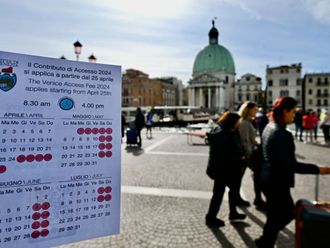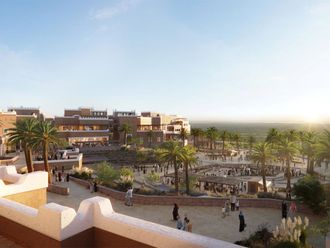Dubai : Rising capacity and falling demand mark the story of the aviation and hospitality sectors in the past 12 months.
Airlines and hotel chains had shaped their business plans around the assumption that the growth of 2007 and the first half of 2008 would continue in the foreseeable future. The global economic slowdown put a damper on their plans.
The region as a whole however, maintains its position as a growth market and has been attracting investments from international players as the market remains a profitable one.
While certain projects have been put on hold, others were too far along to be halted.
The year saw some new hotels come online, one of the major ones being YAS Hotel in Abu Dhabi, amid the Formula 1 circuit on the YAS Island.
During one of the worst recent years for the sector, Saudi chain Rotana has completed the construction of Rose Rayhaan, which is said to be the tallest hotel in the world. Located on Shaikh Zayed Road, it is 333 metres tall with 72 storeys.
Designer rooms
Also constructed this year, within the world's tallest building, Burj Dubai, is the Armani Hotel. Occupying the levels between the concourse and the eighth floor, and levels 38 and 39, the hotel is a joint venture between Emaar Properties and designer Giorgio Armani, who designed the 160 rooms.
Meanwhile, plans are at full throttle for forthcoming projects by international chains like Starwood Capital subsidiaries Louvre Hotels and Golden Tulip Hospitality Group.
In addition to its current portfolio of 40 hotels, it plans to open 60 more hotels in the region in the next five years.
Konstanze Auernheimer, director of marketing at STR Global, an industry researcher, said that 2009 was a "pretty difficult year" for the global industry and the UAE was no exception.
"The UAE had issues with a lot of new supply coming in the market. Coupled with falling demand that hit the UAE a bit later than in Europe, we've seen occupancy rates fall," she said.
In its report for year to date, revenue per available room (RevPAR) in Abu Dhabi has fallen 9.6 per cent, while occupancy was 11.7 per cent lower compared to the first 11 months of last year.
In Dubai, RevPar lost 32.3 per cent with occupancy falling 11.8 per cent. While Abu Dhabi saw its rates increase slightly at 2.3 per cent, Dubai's dropped 23.2 per cent.
"Dubai was most definitely harder hit than Abu Dhabi, mainly because of additional supply," she said.
However, the bigger picture is not so drastic if the exponential growth of 2008 is taken into consideration. "You're coming from top, and balancing out a little bit on performance," she said.
This year was a time for low-cost carriers to shine. Flydubai, Dubai's new carrier, couldn't have picked a better time to launch. It took off in June and has since seen rapid growth in destination, which will hit 12 in a few days.
Meanwhile, Air Arabia, the region's oldest low-cost carrier, enjoying a nine-month net profit of Dh336.6 million this year, announced a new budget airline in partnership with an Egyptian tourism company, Travco Group.
The country's heavyweights, Etihad Airways and Emirates, have been taking delivery of new aircraft and launching new destinations in the past months.
Though airlines across the globe suffered from hedging on extremely high fuel prices of 2008, this year's biggest challenge was load factor.
Despite that, the region bucked the trend in global downturn and remained a growth market.













